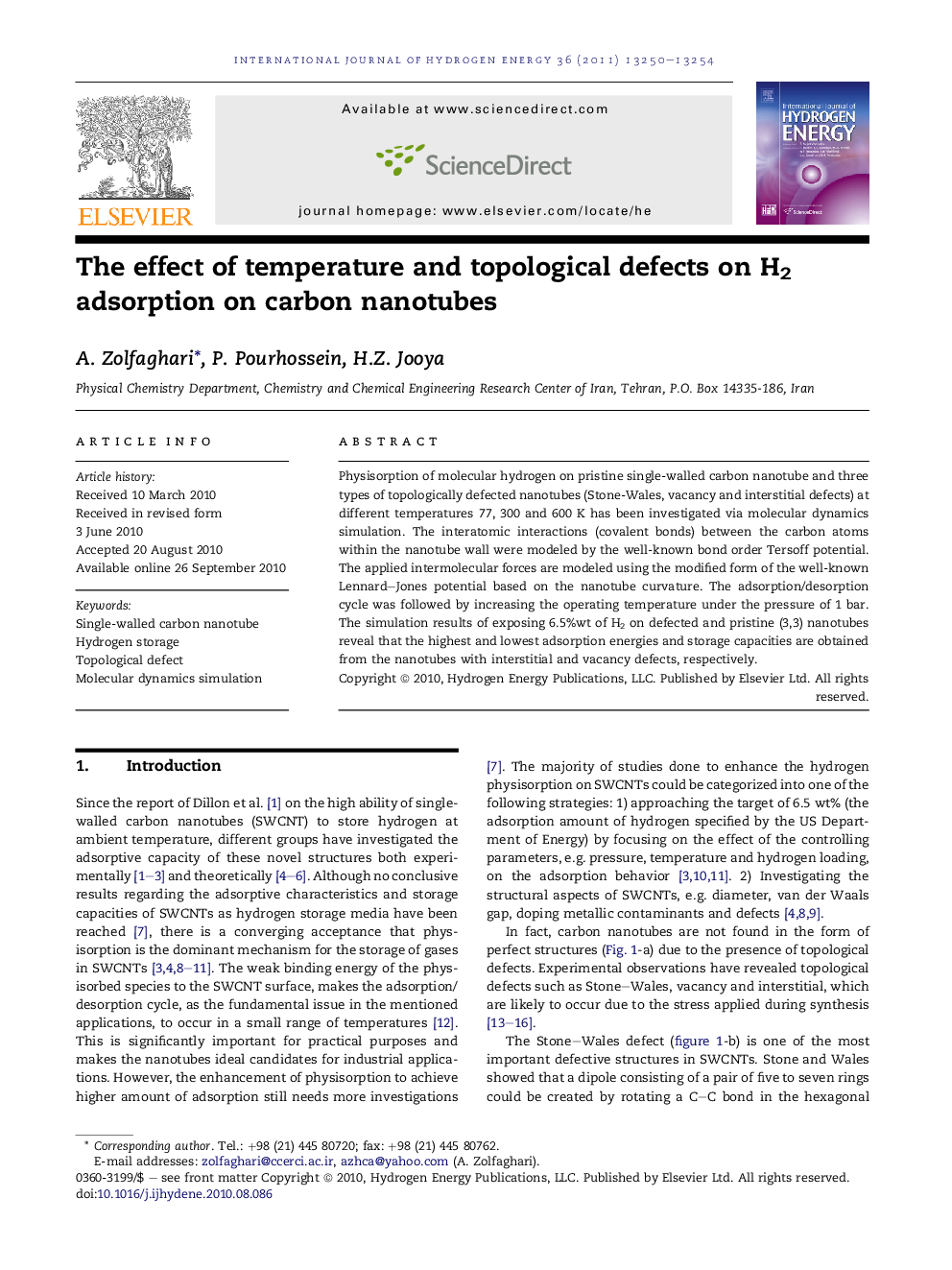| Article ID | Journal | Published Year | Pages | File Type |
|---|---|---|---|---|
| 1271994 | International Journal of Hydrogen Energy | 2011 | 5 Pages |
Physisorption of molecular hydrogen on pristine single-walled carbon nanotube and three types of topologically defected nanotubes (Stone-Wales, vacancy and interstitial defects) at different temperatures 77, 300 and 600 K has been investigated via molecular dynamics simulation. The interatomic interactions (covalent bonds) between the carbon atoms within the nanotube wall were modeled by the well-known bond order Tersoff potential. The applied intermolecular forces are modeled using the modified form of the well-known Lennard–Jones potential based on the nanotube curvature. The adsorption/desorption cycle was followed by increasing the operating temperature under the pressure of 1 bar. The simulation results of exposing 6.5%wt of H2 on defected and pristine (3,3) nanotubes reveal that the highest and lowest adsorption energies and storage capacities are obtained from the nanotubes with interstitial and vacancy defects, respectively.
